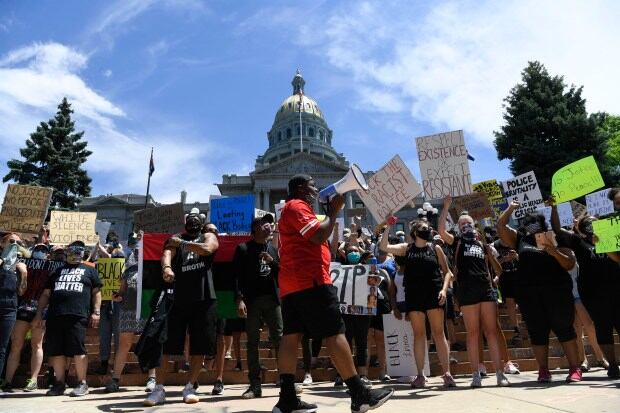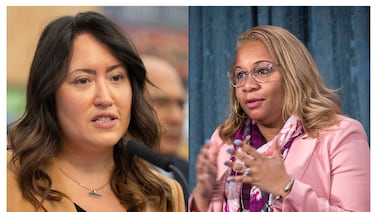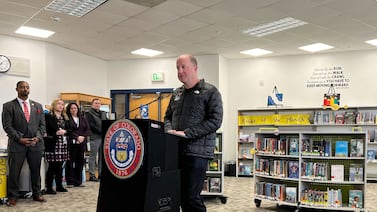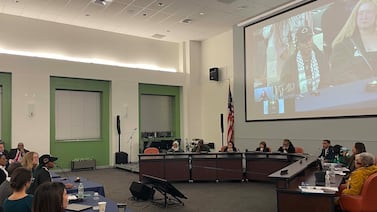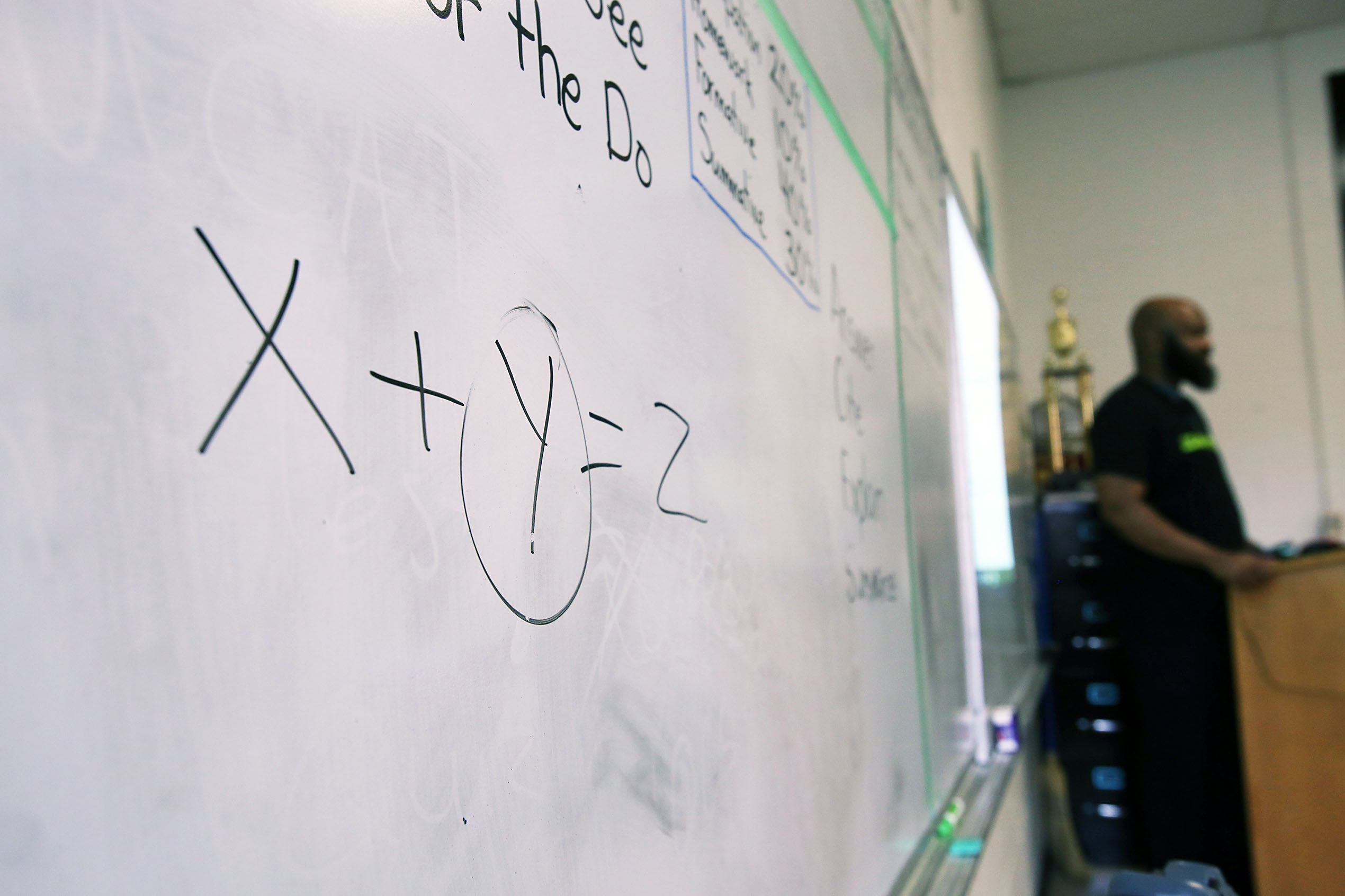As Denver joined dozens of U.S. cities in protesting the killing of George Floyd, a 21-year-old Denver school board member well known for protesting police violence was once again at the front of the crowd. Megaphone in hand, Tay Anderson has been vocal in advocating for peaceful demonstrations and calling out white allies when that demand isn’t heeded.
“The news that’s run tomorrow shouldn’t be about riots,” Anderson told a massive crowd Saturday. “It should be about a peaceful protest led by black folks.”
Anderson was elected to the Denver school board in November. He is a graduate of Denver Public Schools and the youngest member of the board. He’s been an activist for several years, first leading chants of “Black lives matter!” as an 18-year-old in the summer of 2016. He has played a prominent role in many demonstrations since then on issues ranging from gun violence to immigration enforcement to police brutality.
Anderson began his board service by sitting for the Pledge of Allegiance. In a statement he released at the time, he listed the names of 13 people, including Trayvon Martin and Denver teenager Jessica Hernandez, who he said “could’ve been me.”
“I told people on the campaign trail, ‘You’re electing Tay the activist,’” Anderson said in an interview Sunday. “‘Tay the activist is not going away because he has a title.’”
Anderson didn’t organize the protests that took place in Denver Thursday, Friday, and Saturday in response to the police killing in Minneapolis of George Floyd, an unarmed black man, but he was an emcee for some of the daytime demonstrations. Protests continued Sunday.
These protests are different from others he’s led, Anderson said, because this time, protesters are “standing toe to toe in front of law enforcement.”
Denver police have used tear gas, flash bangs, and sponge bullets to disperse crowds of protesters, both during the day and at night, when the tension and force has escalated. Some protesters have thrown rocks and water bottles at police — behavior Anderson said he saw coming from white people in attendance, not protesters of color.
Videos have also captured white protesters spray-painting downtown monuments and government buildings, and smashing windows. Anderson has repeatedly called for the destructive behavior to stop.
“Now this one goes to our white allies,” he told the crowd through a megaphone Saturday. “When you turn up and destroy our city, we are the ones they blame because our name of Black Lives Matter is attached — and that is not OK.”
Anderson was at home by 5 p.m., as tear gas filled downtown for the third night in a row. News coverage shared protesters’ anger and sorrow at Floyd’s death, as he had hoped, but also images of police in riot gear, fires, graffiti, broken windows, and drifting chemical gas.
On Sunday morning, Anderson said he doesn’t condemn people who are rightfully angered by the police killings of black men and women. And he acknowledged that past peaceful protests — including his own — have been criticized or ignored.
But he said that when black leaders in Denver ask white participants to keep the peace at a Black Lives Matter protest, those calls should be heeded.
“If black folks aren’t destroying stuff in this cause in Denver, then I don’t see the need for those who should be our white allies to act on our behalf,” Anderson said.
Especially troubling, he said, is that the children and teenagers attending the protests, many of whom are Denver Public Schools students, get caught in the middle.
While Anderson said he doesn’t believe all police are bad, he said the riot gear and the smirks and grins he saw from some officers were among the reasons he publicly renewed his call this week for the school district to cut ties with the city’s police department and remove police from Denver high schools.
“When I see our DPS kids out there, I’m enthused to see them,” Anderson said. “But I’m always head-on-a-swivel for them. I don’t want anything to happen.”

